[Editor’s Note: Combat veteran and amateur military historian Charles Herrick’s crucial earlier posts in this series corrected 70 years’ worth of miscaptioning of one of Robert Capa’s ten D-Day photographs from Omaha Beach, and pinpointed the exact location and approximate time at which he landed on the Easy Red sector with a later wave.
In this new article, Herrick examines 16mm color film footage of D-Day by U.S. Coast Guard Chief Photographer’s Mate David T. Ruley. Ruley filmed the invasion from his assigned position on board LCI(L)-94 — coincidentally, the very vessel on which Capa departed from Easy Red. Ruley’s film contains brief glimpses of Capa, providing unimpeachable proof of his presence on board and the time of his taking leave of the battlefield. These are some of the few filmed images of Capa in action, and the first — most likely the only — still or film images of him on D-Day.
Herrick compares the evidence in Ruley’s film with relevant photographs (by Capa and others), deriving further information about conditions on the Easy Red sector of Omaha Beach at the time of Capa’s departure therefrom, among other matters. You can enlarge all the illustrations by clicking on them. Part 2 appears below; click here for Part 1. — A. D. C.]
•
Capa on D-Day: After the Beach (cont’d)
by Charles Herrick
… The U.S. Coast Guard ship LCI(L)-94 was hit shortly after retracting from Easy Red. After the crew conducted quick damage control, the captain headed the ship back to the Transport Area (where the larger shipping was anchored), 14 miles off the coast.
After boarding LCI(L)-94, Capa, according to his own account, had gone to the engine room, dried his hands, changed film in his two Contax cameras, and returned above deck to make a few last pictures of the beach and other landing craft. [This is corroborated by eyewitness accounts from LCI(L)-94 crewmembers Charles Jarreau and Clifford W. Lewis. Lewis indicates that Capa boarded shortly after they disembarked their troops. Hit by several shells as it started to pull away from the beach, LCI(L)-94 halted briefly in order to make temporary repairs, and, according to Herrick, did not depart Omaha Beach until approximately 0900 hours. In his June 12 diary entry Lewis mentions Ruley, though not by name: “We had a Coast Guard photographer with us taking colored [sic] movies and he was well pleased with the material at hand.” According to the military records, Ruley’s assignment to LCI(L)-94 ran from April 28 through August 12. — A. D. C.]
One of these Capa pictures, taken about two miles offshore, captured LCT-305 on its final run into the beach (figure 9). The 305 had been cleared at the Line of Departure at 0900 hours, so this would place Capa’s photo shortly thereafter. Given the planning speed for an LCI, the trip back to the Transport Area would have taken LCI(L)-94 about an hour, and it was during this period that U.S. Coast Guard Chief Photographer’s Mate David T. Ruley filmed the clips featuring Capa.
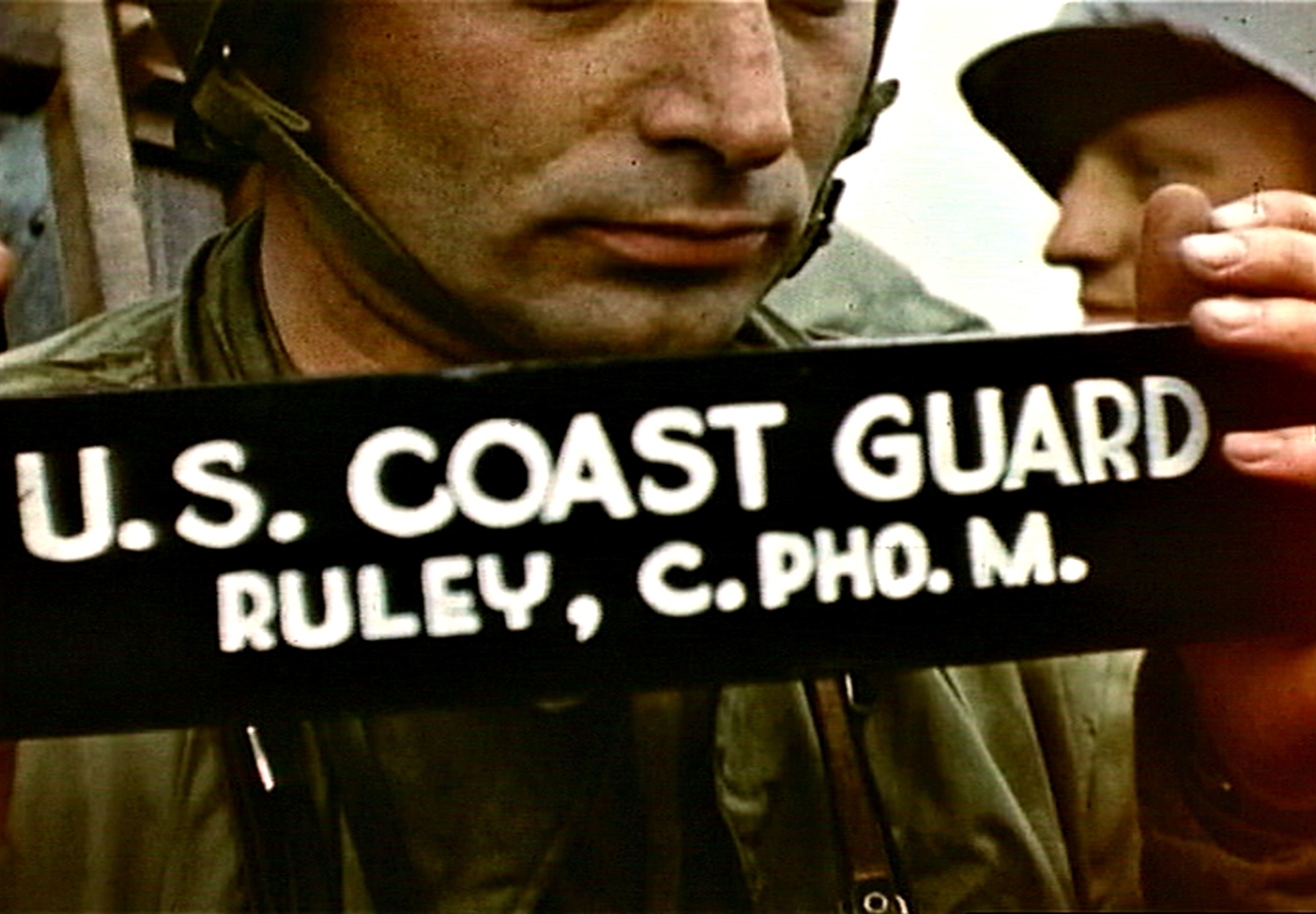
Fig. 10: Robert Capa holding cinematographer’s slate aboard LCI(L)-94, D-Day, frame from film by David T. Ruley
You can find these film clips by Ruley at the website of the National Archives, and also on YouTube. The first clip, starting at timestamp 4:55 (figure 10), is something of a non-event. Capa is aboard the 94, obligingly holding the slate board for Ruley at the beginning of the clip. Although only the bottom half of his face is visible, the nose and mouth are clearly Capa’s. Furthermore, the figure is wearing an Army olive-drab green field uniform, not the Coast Guard wet-weather gear and life jackets which the ship’s crew is wearing. As this roll was exposed after the 94 had debarked its Army troop, the only person on board at the time dressed in an Army field uniform was Capa. His camera strap is also visible, hanging from his neck.
It is all too typical of the Capa saga that he made no mention at all of running into an armed forces cameraman aboard the LCI. And it is perhaps also typical that Ruley never mentioned running into Capa, either. Only the movie clip provides the evidence that they met.
The final observation is that Capa’s wool/cotton/flannel uniform seems remarkably neat and dry considering his supposed recent experience on the beach, during which he claimed to have waded through the surf; laid in the surf behind a hedgehog; crawled on his belly from the shoreline to the shingle; made a futile effort to dig a foxhole; and finally waded out to the 94 in water that came up to his chin. None of the effects of that can be seen in Ruley’s film.
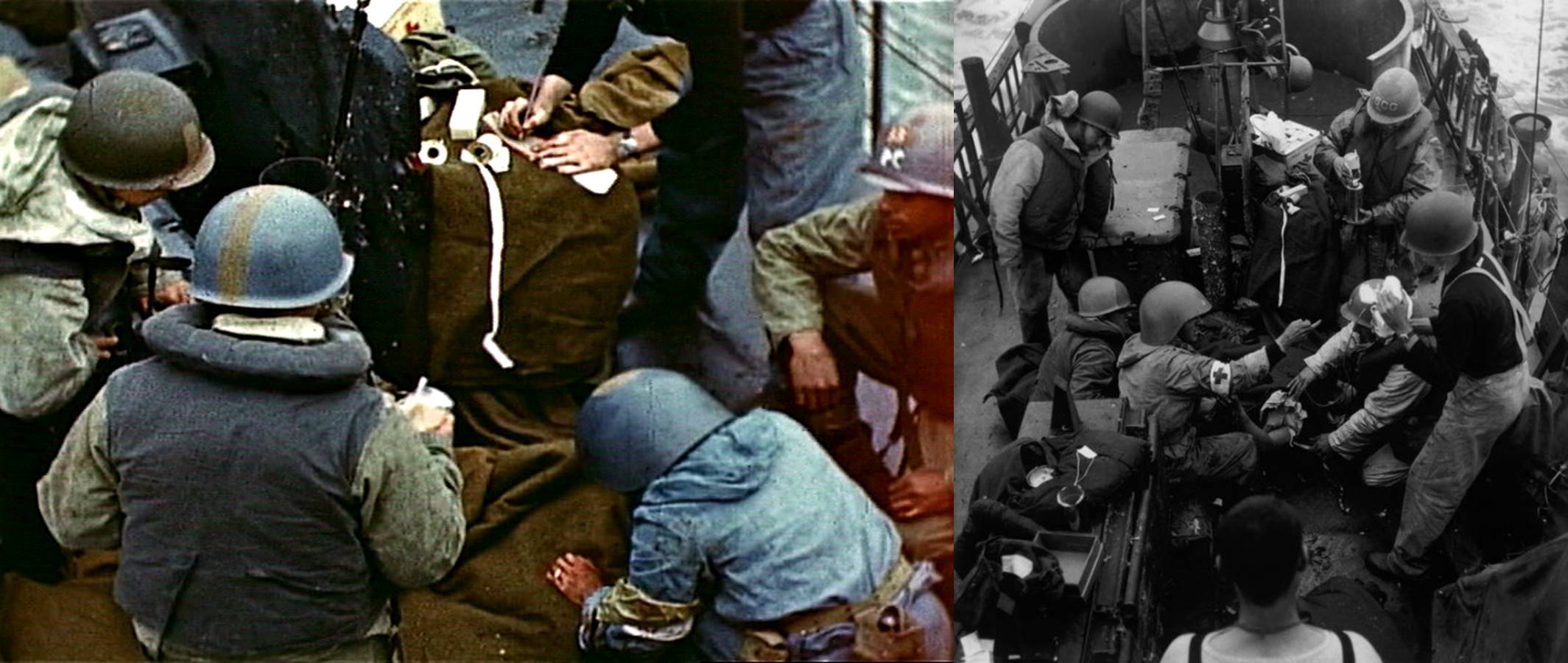
Fig. 11: Medic and crew treating wounded seaman aboard LCI(L)-94, D-Day. Frame from film by David Ruley (l) and photo by Robert Capa (r).
The film’s next sequence (timestamp 5:01) shows the crew treating the mortally wounded Seaman 1st Class Jack DeNunzio. Although Capa is not seen in that sequence, he did make at least two photos of the same action taken from the boat deck, the same vantage point as Ruley’s. One was published in LIFE‘s D-Day feature story (“Beachheads of Normandy,” June 19, 1944, p. 30). The same version was published in Capa’s 1947 Slightly Out of Focus, and a very similar photo was included in Charles Wertenbaker’s 1944 book Invasion! (figure 11).
Later in the film, there is a brief sequence showing preparations to transfer one of the 94’s wounded crewmen to the U.S.S. Samuel Chase, which had better medical facilities. An LCVP from the Chase maneuvers to bring its starboard side along the 94 while, in the right foreground, the LCI’s crew struggles to lower Quartermaster 3rd Class David S. Anthony from the boat deck down to a stretcher on the main deck (figure 12).
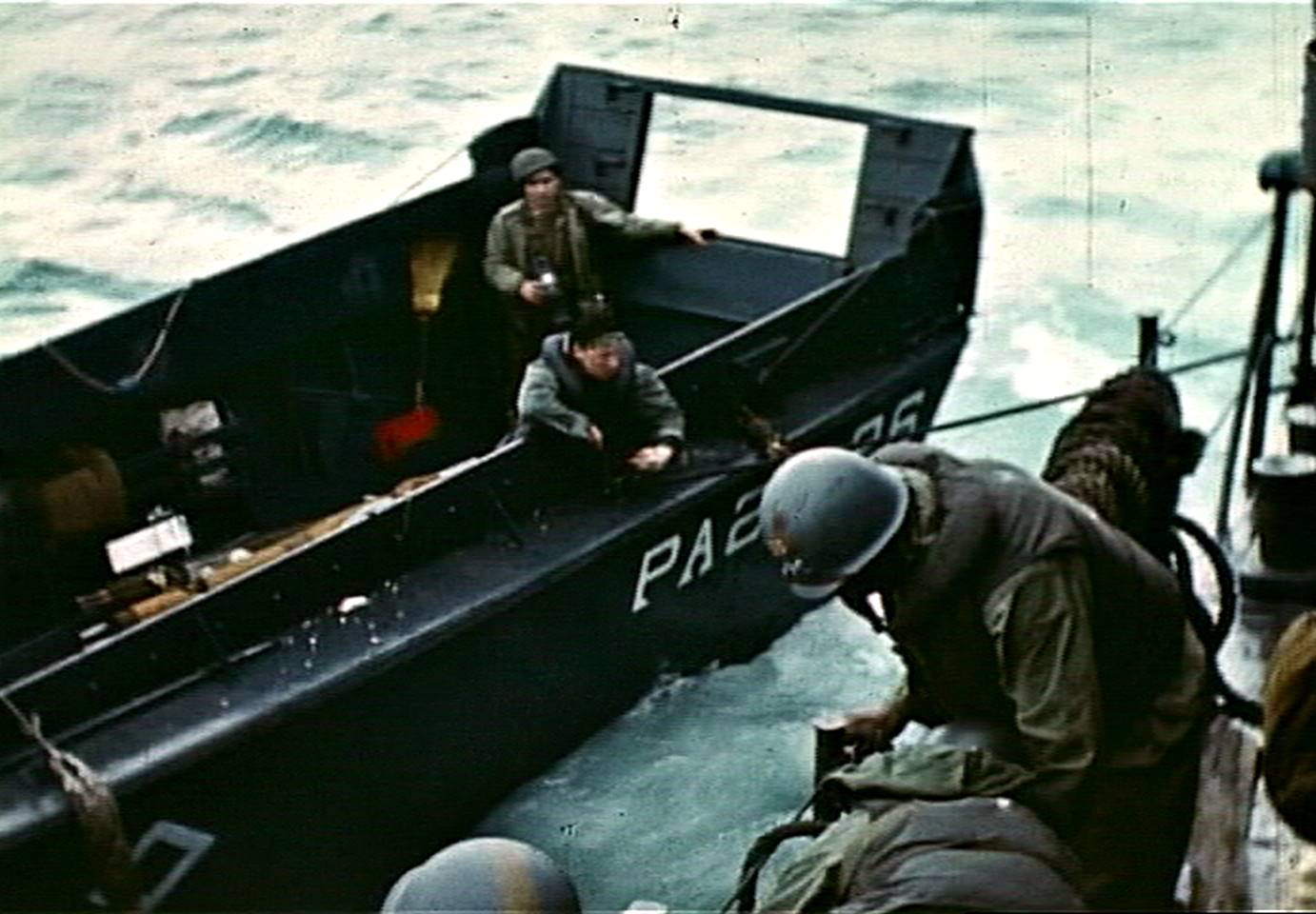
Fig. 12: Robert Capa, center rear, aboard LCVP from USS Samuel Chase, with camera during transfer of casualty, D-Day, frame from film by David T. Ruley
Surprisingly, Capa is already aboard the LCVP, as seen starting at timestamp 5:26; he’s braced at the port bow, with his left hand gripping the LCVP’s ramp. His right hand holds his camera, and he appears poised to capture shots of the casualty transfer. If he did take any photos of the scene, they have never surfaced. In the last few frames of this scene, Capa’s brown leather camera bag is visible, hanging off his left shoulder.
Capa wore his canteen in an unusual position, on his left side just forward of his hip, and this is visible in Ruley’s clip. David Scherman’s photo of Capa the next day in Weymouth (figure 13) captured the identical placement of the canteen, reinforcing our identification of Capa.
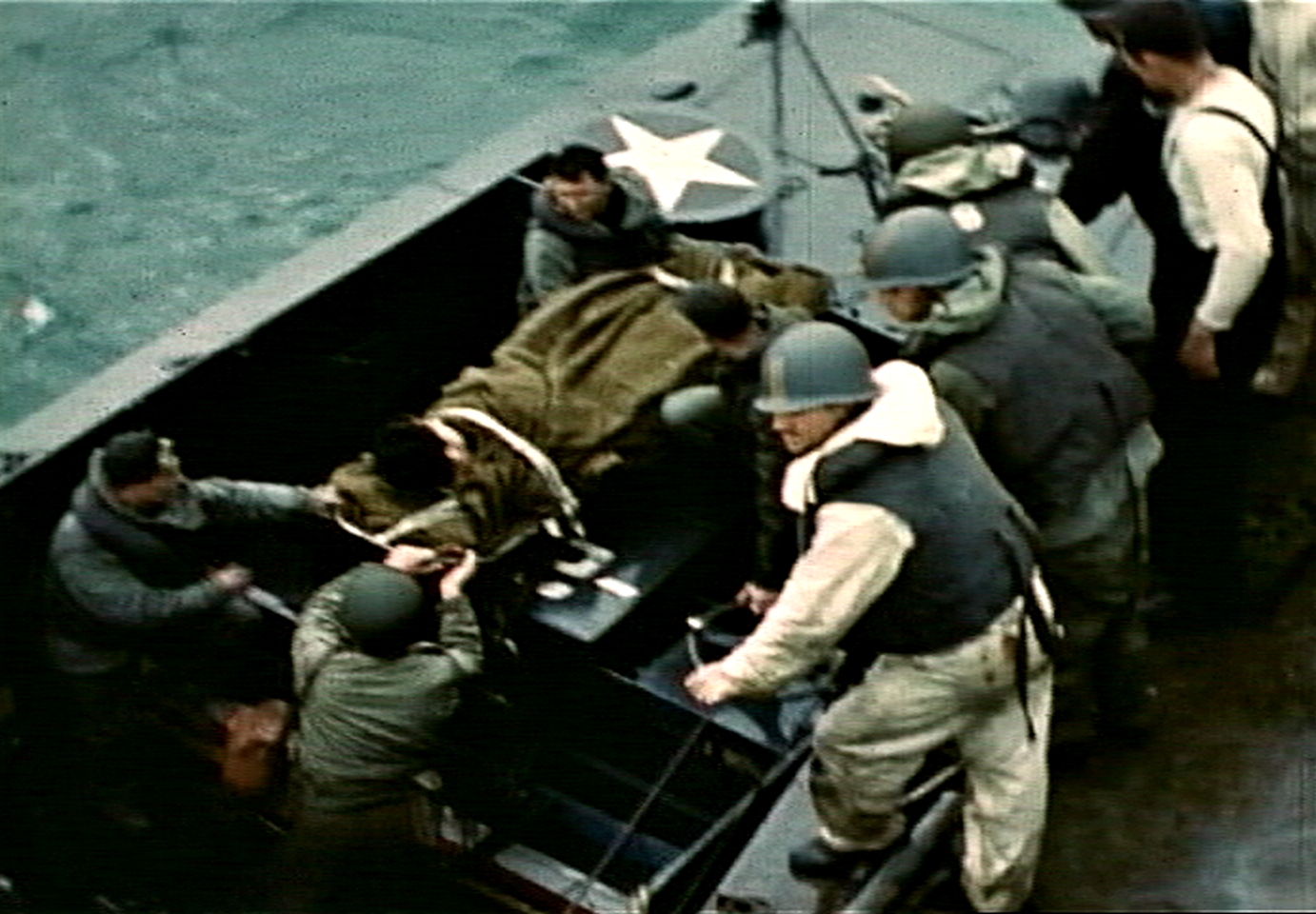
Fig. 14: Robert Capa, bottom left, aboard LCVP from USS Samuel Chase, assisting with transfer of casualty, D-Day, frame from film by David T. Ruley
Two short scenes later we see the same LCVP again; this time its port side is along the 94. The action captures the difficulty of lowering Anthony’s stretcher into the landing craft. In the last few frames of the sequence, Capa moves into view to help lower the stretcher (figure 14). This clip more clearly shows Capa’s leather camera bag. In his two accounts of D-Day, Capa gave different reasons for fleeing the beach. In the earliest version, dictated to Charles Christian Wertenbaker for that Time correspondent’s fall 1944 book Invasion, he left the beach because he had run out of film, which seems improbable given the size of his camera bag and the historical importance of the assignment.
[Editor’s note: In his 1947 memoir Slightly Out of Focus Capa gives no indication of the scope of his D-Day assignment or his plan for his coverage of the event. The reader might infer from this that — assuming the Allies succeeded in establishing a beachhead — Capa would have embedded himself with the troops and followed them inland, as did LIFE staffers Bob Landry and George Rodger.
Yet no statement by either Capa or John Morris, and certainly no hard evidence, substantiates that assumption. This raises the possibility that, even if he had reached dry land, Capa had no intention of staying there long, intending instead all along to return to England aboard some ship departing from the Transport Area that afternoon, as indeed he did. — A. D. C.]
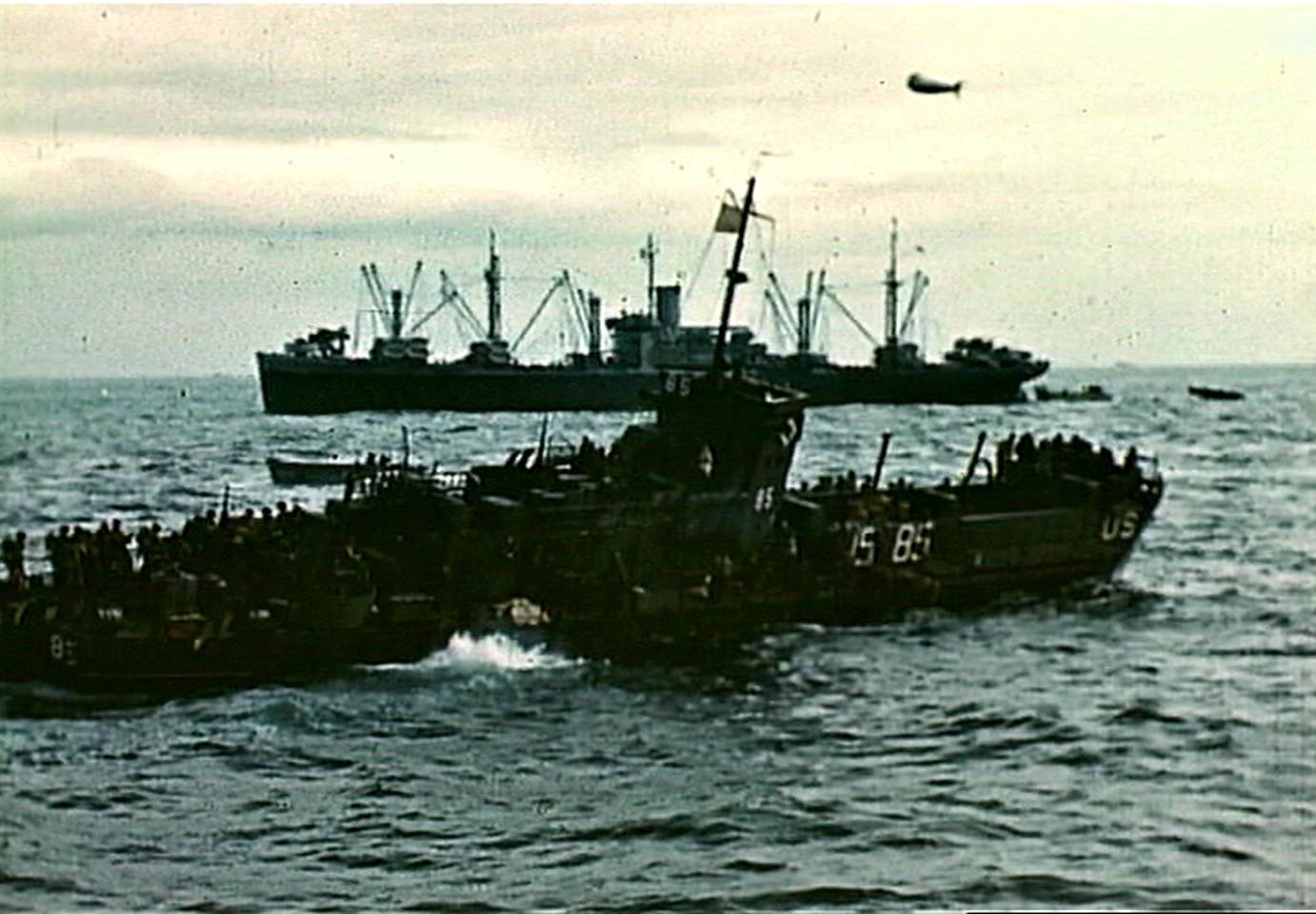
Fig. 15: Fatally damaged LCI(L)-85 returns to USS Samuel Chase, D-Day, frame from film by David T. Ruley
Another Ruley clip (figure 15) shows LCI(L)-85 limping towards the Chase, back in the Transport Area. The 85 had struck a mine and been holed by shells multiple times below the waterline while debarking troops, and was struggling to fight fires and flooding. It had made it back to the Transport Area with a number of troops still aboard, and was listing badly. Although Capa had left the 94 by the time Ruley filmed the 85, the LCVP he transferred to would have passed the badly damaged 85 en route to the Chase.
After Capa made it back to the Chase, he took a number of additional photos of that morning’s activities. One of those looks straight down on the decks of the stricken 85 after it reached the Chase (figure 16). The 85 had come alongside the Chase at about 1200 hours and capsized at about 1430 hours, so this places Capa back aboard the Chase at least by this window.
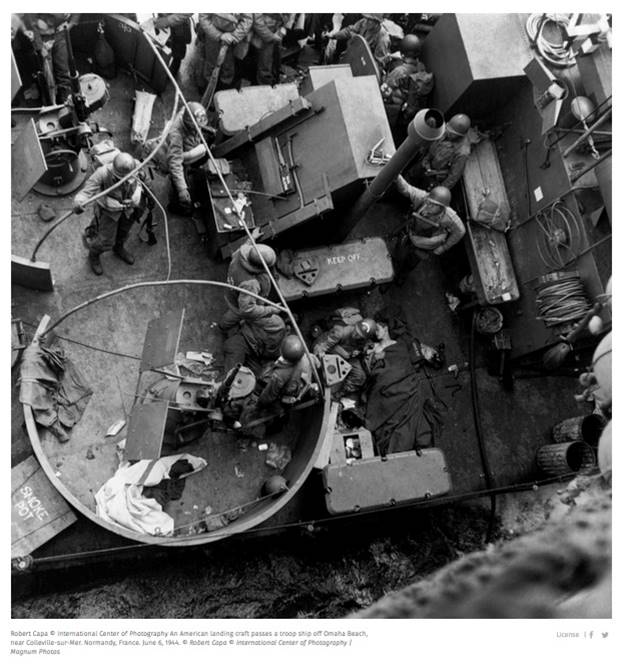
Fig. 16: Robert Capa, view of LCI(L)-85 from USS Samuel Chase, D-Day. Screenshot from Magnum Photos website.
The fate of the 85 must have impressed Capa; apparently it inspired him to include in Slightly Out of Focus the false detail that “Our boat was listing and we slowly pulled away from the beach to try to reach the mother ship before we sank.” The 94, too, had been hit, but not below the waterline, and was not listing. It made a number of additional runs between the transport area and the beach on D-Day and in the days that followed. It was the 85 that listed and finally sank, and it was the suffering of the 85 that Capa “borrowed” for his own story. (It is useful to remember that Capa was quite frank in admitting that Slightly Out of Focus was not constrained by a strict adherence to the truth.)
[Editor’s note: This image, previously unfamiliar to me, appears in a February 26, 2017 Capa feature titled “D-Day and the Omaha Beach landings” at the Magnum Photos website. Its caption there reads, “An American landing craft passes a troop ship off Omaha Beach, near Colleville-sur-Mer. Normandy, France. June 6, 1944.” — A. D. C.]
•
Although the Ruley film so far discovered does not include the key sequences Allan Coleman noted in “At the Beaches of Normandy,” it still provides a wealth of information, filling in many details of Capa’s adventures that day. We now have proof positive that Capa fled on the LCI(L)-94 — not LCI(L)-85 — and that the 94’s beaching site was much farther east on Omaha Beach than its crew thought. We also know that at least two uncredited sequences Coleman discovered were filmed by Ruley while aboard the 94.
Ruley’s LCI debarkation clip in particular provides valuable context for Capa’s limited pictures from the beach. Except for his initial set of five frames, made from the bow of the LCVP that brought him there, the rest of Capa’s photos seem to portray troops pinned down in the water, with the invasion stalled at the surf. But by examining Ruley’s debarkation clip (figure 17) we gain a much different perspective.
Three different groups of soldiers are upright and moving ashore, not counting the two columns of men debarking from the LCI. Two of these groups (highlighted in red) are shown moving quickly, and the third (highlighted in blue) moves more slowly as the duplex-drive tank ahead of them advances at a walking pace. This confirms our earlier conclusion that Capa landed at a relatively lightly defended part of Omaha Beach, no matter how his photos were later misrepresented.
So Capa’s beach photos, while perhaps emotionally powerful, are not necessarily an accurate representation of the conditions at that time on that particular stretch of the beach. His photos provide an important visual record, but one that is far from complete or accurate in and of itself, capturing no more information and emotion than what military photographers on assignment also shot that day.
•
A final piece of important information: The Chase, with Capa aboard, anchored back at Portland Harbour, outside Weymouth, at 0536 on 7 June. The first boat that came alongside was the tug HMS Queen Empress, at 1045 hours, there to take off casualties, survivors and dead. The tug was logged as leaving the Chase at 1245 hours, so it took two hours to transfer the living and the dead. This means that Capa (technically a “straggler” in the eyes of the military) could not have reached shore before 1300 hours, or 7+ hours after the ship dropped anchor. This reduces considerably the time gap between his reaching shore and the arrival of his films in London circa 2100 hours that night.
•
[Editor’s note: So now we know that Ruley rode to and from Easy Red on LCI(L)-94; that he made those films of the scene there, which correspond to the scene as depicted in Capa’s photos; that these filmed moments happened around the same time Capa was on Easy Red; that Capa rode back to the Chase on LCI(L)-94; and that Ruley filmed him briefly aboard LCI(L)-94 that morning.
Not incidentally, we also know from these film clips that much of Capa’s account of conditions on the beach at the time and his own return to the U.S.S. Chase was, to put it kindly, lavishly embroidered. These snippets demonstrate that (a) troops were in steady forward motion at this time, not paralyzed with fear and pinned down by enemy fire; (b) neither the shallows nor the beach were strewn with bodies at this spot; and (c) at least one cinematographer recorded the same scene successfully.
Patrick Peccatte, whose thoughtful commentary on our project sent it viral in France in summer 2015, has published a translation into French of the above post by Herrick at his blog, Déjà vu. Click here to read it in French. — A. D. C.]
(Part 1 I 2)
Text copyright © 2017 by Charles Herrick. Illustrations © Charles Herrick 2017 as noted. All rights reserved.
•
(For an index of links to all posts in this series, click here.)
•
This post supported by a donation from Colleen Thornton.
•
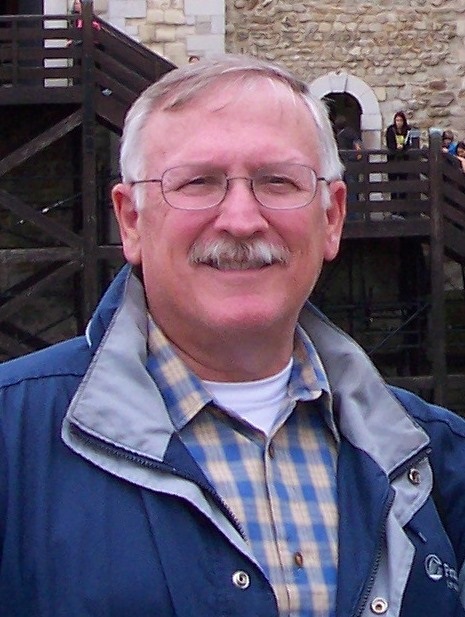 Charles Herrick joined the U.S. Army in 1970 and graduated from the U.S. Military Academy at West Point in 1974. Commissioned in the Infantry, he earned the Ranger tab and Master Parachutist’s wings. He served in a variety of positions from company grade officer to the Pentagon. He earned the Combat Infantryman’s badge while assigned as the Operations Officer of the 193rd Infantry Brigade in Panama in 1989, and later graduated from the U.S. Army War College.
Charles Herrick joined the U.S. Army in 1970 and graduated from the U.S. Military Academy at West Point in 1974. Commissioned in the Infantry, he earned the Ranger tab and Master Parachutist’s wings. He served in a variety of positions from company grade officer to the Pentagon. He earned the Combat Infantryman’s badge while assigned as the Operations Officer of the 193rd Infantry Brigade in Panama in 1989, and later graduated from the U.S. Army War College.
Since retiring from the Army in 1996, Herrick has continued to work on defense issues as a contractor in East Asia, Latin America, the Balkans, Africa and Central Asia. He holds an MBA from the University of California at Los Angeles. He lives in California with his wife, where he pursues his passion for military history. To contact Charles Herrick, click here.


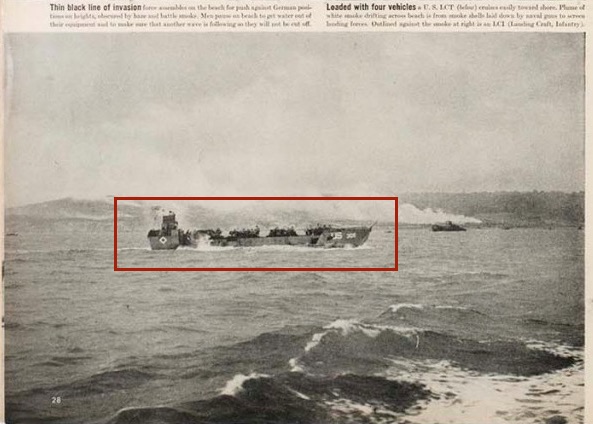
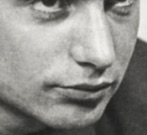
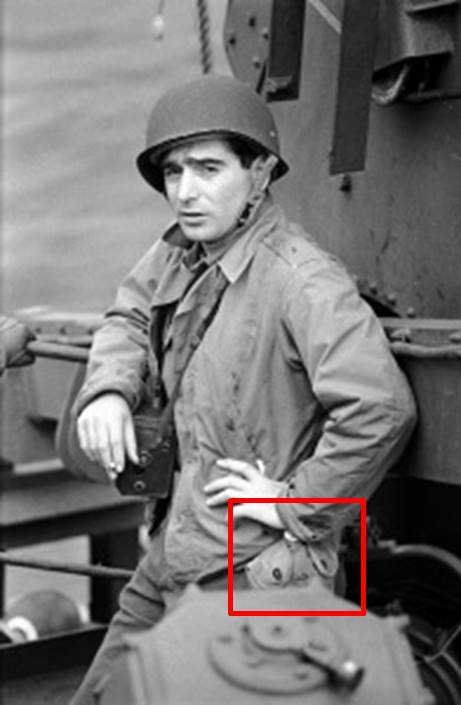
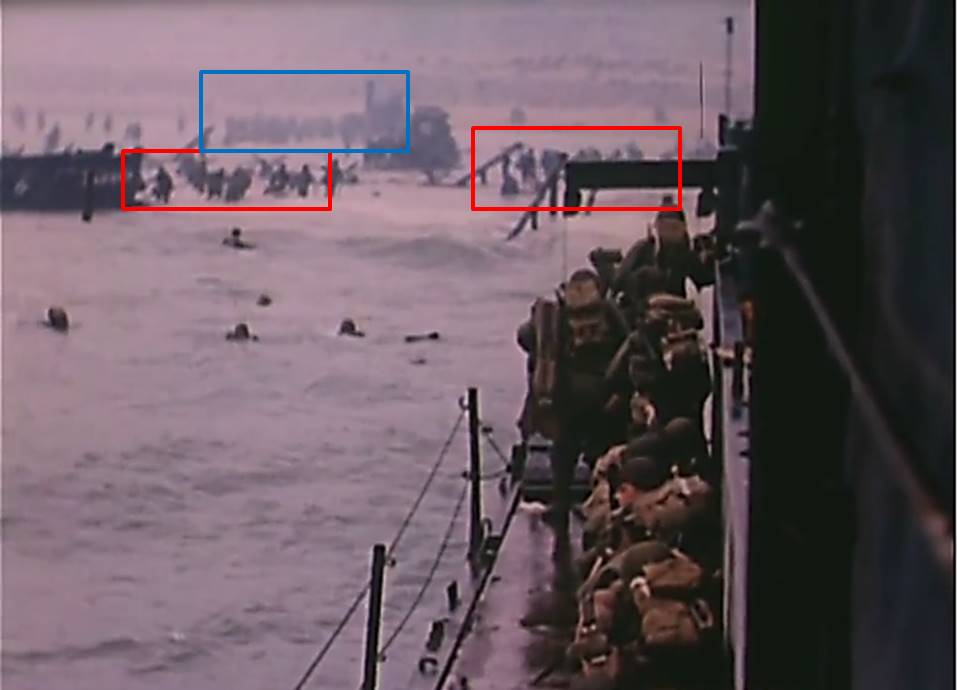




WOW! How much more forensic evidence is needed before the Capa Club finally acknowledges the truth! Not only a liar, but a coward. Happy to have my donation support this particular post. Thank you.
Colleen
Thanks! Appreciate the kind words. When I got involved in this project a couple years back, I was a bit discouraged by what seemed to be a lack of evidence bearing on Capa’s D-Day adventures. Fortunately, digging has turned up a surprisingly large amount of material relating to this topic. That, combined with the invaluable interplay with Allan Coleman, J. Ross Baughman and Rob McElroy, has enabled us to shed a good deal of new light on this small slice of history.
Glad you enjoyed it!
Chuck